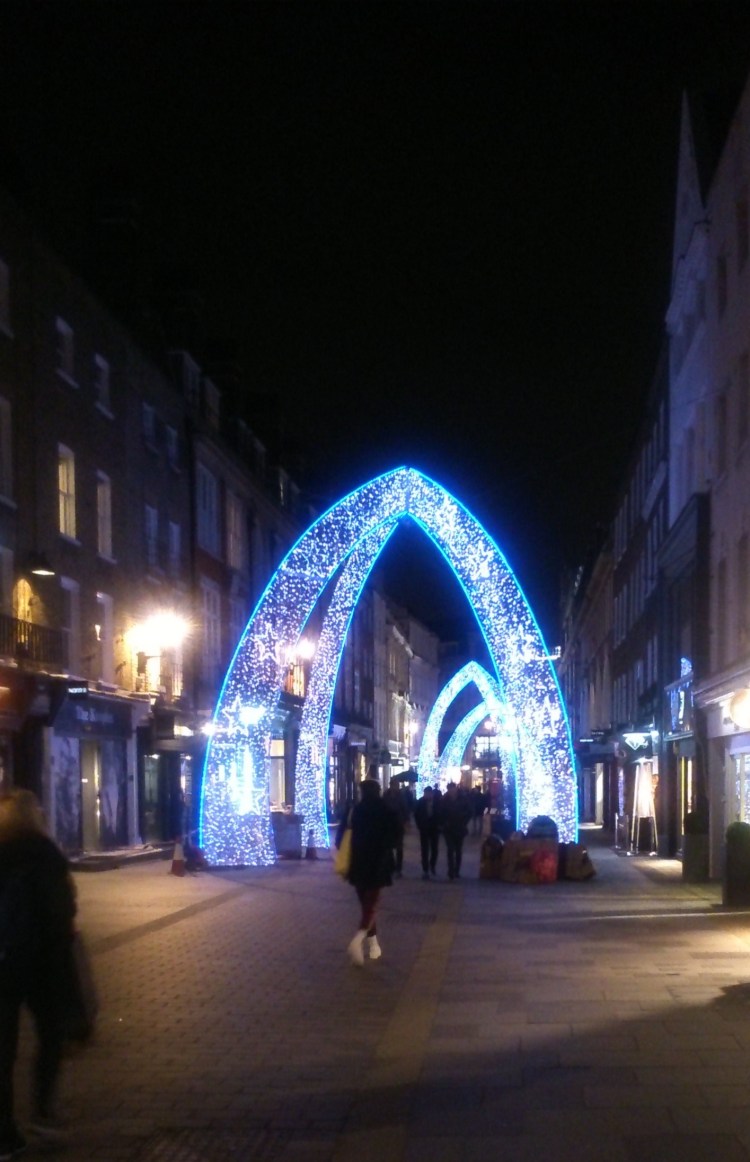Earlier this week I was in London for a part-work, part leisure trip – taking in a couple of exhibitions and getting my hands on an obscure pamphlet on a Blake picture in the National Art Library.
Among the exhibitions was the British Library’s ‘Terror and Wonder: The Gothic Imagination’, which traces the rich cultural phenomena of the Gothic from the eighteenth century to the present day. The early part of the exhibition took me back to thinking about Blake and Gothic for ‘Burning Bright’ at the John Rylands Library in 2012. There were a number of familiar objects in the display here, including Blake’s own Night Thoughts engravings and several pages from Vala/The Four Zoas.
There were no huge (/terrifying) surprises in the narrative set out here, but it was good to be introduced to some objects I was not familiar with, and particularly to find out more about later iterations of Gothic.
That evening, however, I did encounter a gothic surprise: on a stroll around London’s Christmas lights, I turned off Oxford Street onto South Molton Street to see the scene above. 17 South Molton Street is where Blake lived after his return to London in 1803 (following three years in Felpham, Sussex), and is the only one of his London residences still standing.
Although a brief internet search suggests that these lights have been on South Molton Street for several years, I don’t recall seeing them before. What I could not find out was whether or not the lights are intended to be Blakean – if any reader knows, I would be delighted to hear from you. But whether intentionally so or otherwise, the gothic arches of light are appropriate for this Blakean setting. Blake called Gothic ‘living form’ (On Virgil) and Gothic motifs appear frequently in his images – a famous example is Angels Hovering over the Body of Christ in the Sepulchre (c.1805) in which the angels form an arch reminiscent of the gothic ‘ogee’ arches Blake knew from Westminster Abbey.
The Blakean resonance of the illuminations is further reinforced in their fourfold structure. In Blake’s mythos, to be fourfold is a characteristic of the spiritual state; thus, the spiritual London is fourfold, the Human is fourfold, there are four gates to the celestial city of Golgonooza, and so on.
Is this mere accident? Are the lights celebrating Blake or the posh shops that now populate South Molton Street. Either way, if the ghost of Blake happens to visit his former home, I hope he’d appreciate the former and enjoy the irony of the latter.

You must be logged in to post a comment.